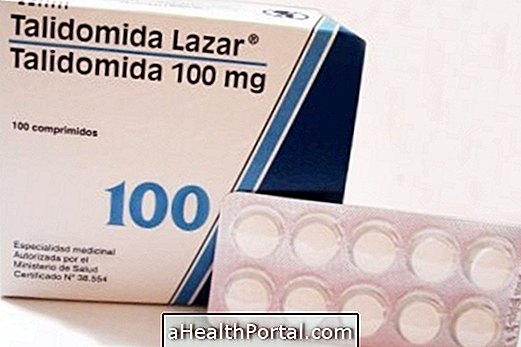Clindamycin is an antibiotic indicated for the treatment of various infections caused by bacteria, upper and lower respiratory tract, skin and soft parts, lower abdomen and female genital tract, teeth, bones and joints and even in cases of sepsis bacterial.
This medicine is available as a tablet, injectable, cream or vaginal cream and may therefore be used in a variety of ways such as oral, injectable, topical or vaginal, depending on the severity and extent of the infection and the site affected.

What is it for
Clindamycin may be used in a number of infections caused by bacteria in the following locations:
- Upper respiratory tract, such as trachea, sinuses, tonsils, larynx and ear;
- Lower respiratory tract, such as bronchi and lungs;
- Pulmonary pneumonia and abscesses;
- Skin and tissues near muscles and tendons;
- Lower abdomen region;
- Female genital tract, such as uterus, fallopian tubes, ovary and vagina;
- Teeth;
- Bones and joints.
In addition, it may also be administered in situations of sepsis and intra-abdominal abscesses. Know what septicemia is, what the symptoms are and how to treat it.
What is the dosage
How to use this medicine depends on the formulation prescribed by the doctor and the condition that the person presents:
1. Clindamycin tablets
Generally, in adults, the recommended daily dose of clindamycin hydrochloride is 600 to 1800 mg, divided into 2, 3 or 4 equal doses, with the maximum recommended dose being 1800 mg. For the treatment of acute streptococcal amanditis and pharyngitis, the recommended dose is 300 mg twice daily for 10 days.
The duration of treatment depends on the type and severity of the infection and should be defined by the physician, depending on the diagnosis.
2. Injectable Clindamycin
Administration of clindamycin should be given intramuscularly or intravenously by a health care professional.
In adults, for intra-abdominal infections, pelvic infections and other complications or serious infections, the usual daily dose of clindamycin phosphate is 2400 to 2700 mg in 2, 3 or 4 equal doses. For milder infections caused by sensitive organisms, a dose of 1200 to 1800 mg per day in 3 or 4 equal doses may be sufficient.
In children, the recommended dose is 20-40 mg / kg per day in 3 or 4 equal doses.
3. Clindamycin for topical use
The vial should be shaken before use and then a thin layer of the product should be applied to the dry and clean skin of the affected area 2 times daily using the vial applicator.
The treatment varies from person to person, depending on the severity of acne.
4. Clindamycin vaginal cream
The recommended dose is one cream-filled applicator, which is about 5 g, corresponding to about 100 mg of clindamycin phosphate. The applicator should be used intravaginally for 3 to 7 consecutive days, preferably at bedtime.
Possible side effects
The most common side effects that may occur with the use of this medication are pseudomembranous colitis, diarrhea, abdominal pain, changes in liver function tests, skin rashes, vein inflammation in the case of injectable clindamycin and vaginitis in women who used the cream vaginal.
Here's how to fight off the diarrhea caused by this antibiotic.
Who should not use
Clindamycin should not be used by people who are allergic to this active substance or to any of the ingredients present in the formula used. In addition, it should also not be used to treat meningitis, or by pregnant or breastfeeding women.


















